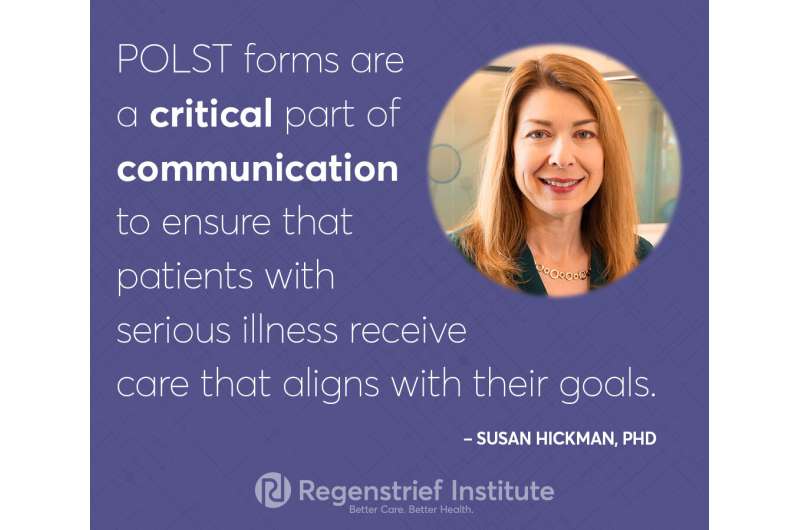Nursing home residents with POLST forms three times more likely to have preferences known

Nursing home residents with medical order forms indicating their treatment preferences were three times more likely to have their current preferences documented in their medical record than residents without the forms, according to a study from Indiana University School of Nursing and IU Center for Aging Research at Regenstrief Institute.
POLST is a medical order form that documents what sort of life-sustaining treatments a person prefers to receive or not receive, such as hospitalization or comfort-focused care. POLST provides more specific directions than advance directives. The POLST form is used widely in nursing homes throughout the United States, though the name varies by state.
"POLST forms are a critical part of communication to ensure that patients with serious illness receive care that aligns with their goals," said study first author Susan Hickman, Ph.D., director of the IU Center for Aging Research at Regenstrief and professor at IU School of Medicine and IU School of Nursing. "Often, preferences are not communicated with providers, which can lead to more aggressive care than what the patient wanted. This research shows that POLST forms are effective at communicating current care preferences and increases the likelihood that treatments will match preferences."
The study team measured concordance between documentation and current preferences for nursing home residents in 40 Indiana facilities. The researchers compared residents in long-stay facilities who used POLST forms with residents in facilities that did not. They found that preference matched documentation 59 percent of the time for residents with a POLST and 35 percent for residents without.
"The difference in concordance shows that having a written record is useful and does lead to care better matching preferences, however, it also shows that there is still room for improvement in ensuring preferences are known," said Dr. Hickman. "Advance care planning conversations can be difficult. We need to provide support to residents and families who are making these decisions and encourage revisiting decisions as circumstances change."
More information: Susan E. Hickman et al. Do Life-sustaining Treatment Orders Match Patient and Surrogate Preferences? The Role of POLST, Journal of General Internal Medicine (2020). DOI: 10.1007/s11606-020-06292-1


















